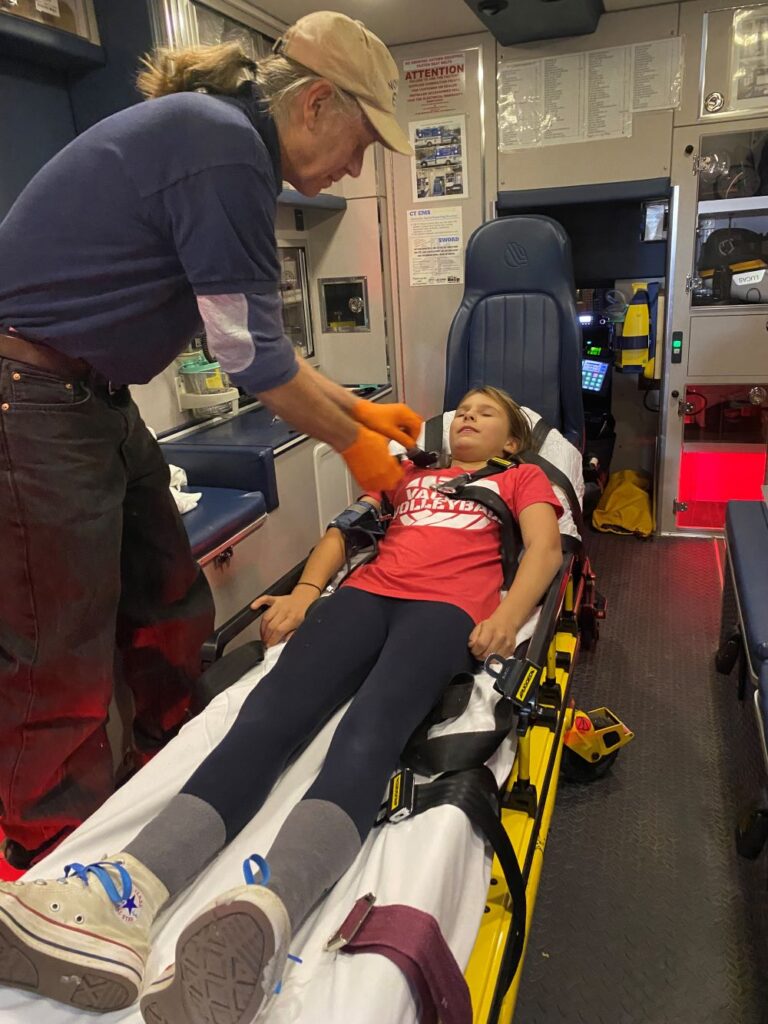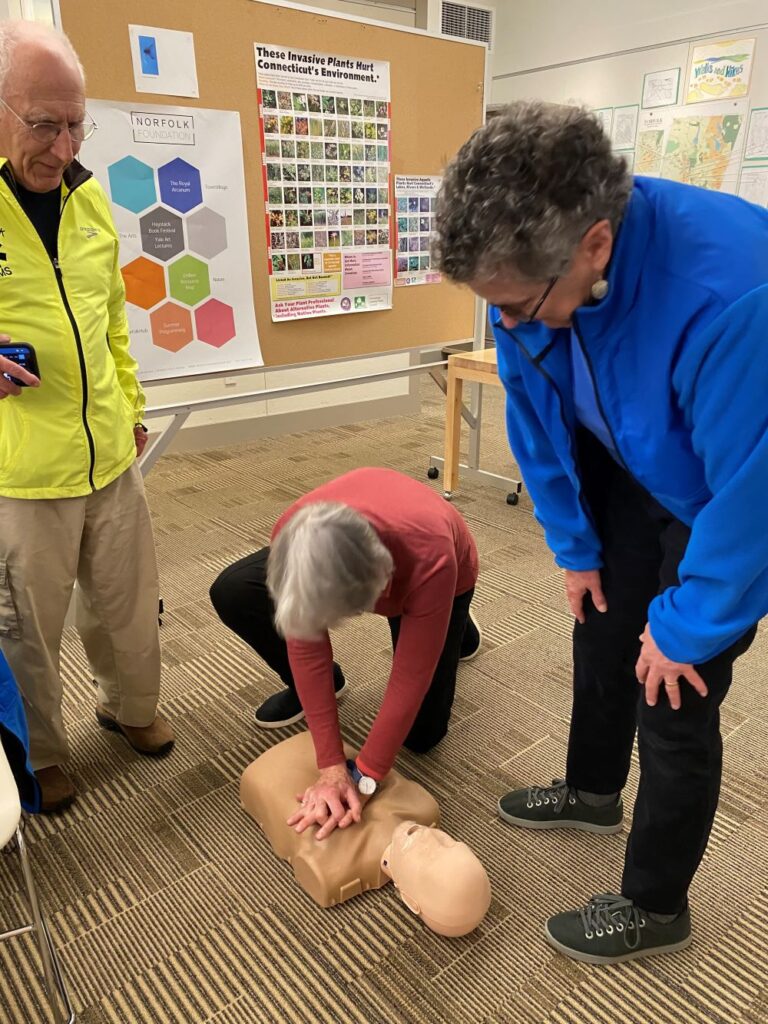Norfolk Lions Club Ambulance Demonstrates a Typical Callout
What to Do in an Emergency
By Ruth Melville

In a mock 911 call, Ron Riedeman takes care of his “patient,” Belle Bracken, in the ambulance.
Most Norfolk residents know that if they need emergency medical help, they can rely on the Norfolk Lions Club Ambulance (NLCA.) This all-volunteer service is available all day, every day, and there is never a bill to pay. But what can you do to help the ambulance team do its job safely and efficiently? On Nov. 11, members of the NLCA conducted an interactive demonstration at the Hub to familiarize people with what happens when you call 911.
In the Northwest Corner, all 911 calls go to the Litchfield County Dispatch in Torrington. EMT (emergency medical technician) and Deputy Chief Jon Riedeman stressed that callers shouldn’t just give their address and hang up. The dispatcher needs callers to stay on the line so that they can continue to give advice and instruction. Tom Hodgkin, a driver and EMR (emergency medical responder), passed out a list of useful things people can do while waiting for the ambulance to arrive (see sidebar).
Bill Brodnitzki talked the group through what to expect once the ambulance arrives on the scene. The ambulance team will want do a quick initial assessment of the patient’s condition: Are they talking? How is their pulse, their temperature? Are they breathing okay? That information is transmitted to the dispatcher. If necessary, the EMTs can call for additional medical assistance, which usually comes from Winsted. The ambulance will then take the patient to the Winsted Health Center, Torrington’s Charlotte Hungerford Hospital, or Waterbury Hospital. Contrary to what you see on TV, Brodnitzki said, family members are not allowed to ride in the ambulance.

Susanna Wood practics chest compressions under the supervision of Barbara Spiegel.
To make these stressful situations seem less daunting, the EMTs played a recording of a sample 911 call, and then Janet Byrne and her daughter Belle acted out a typical scenario. Byrne pretended to call 911when her daughter felt ill after a bad allergic reaction. Riedeman and EMR Barbara Spiegel arrived on the scene, assessed Belle’s condition, treated her and placed her on a stretcher to be carried out to an ambulance waiting outside the Hub.
Attendees also got a chance to practice hands-only CPR, which, Brodnitzki explained, is both easier to learn than the traditional mouth-to-mouth CPR and less intimidating for people to perform. Doing 100-120 compressions a minute with adequate force will keep oxygenated blood circulating through the patient’s body until medical assistance arrives.
The NLCA is always looking for new volunteers. In response to a question from the audience, ambulance chief Kitty Hickcox said that they have recently gotten some new, and younger, members. But age is not a barrier to helping in some capacity. In a EMR class she’s currently co-teaching in Salisbury, one of the students is 82 years old.
How to Prepare for the Ambulance:
*Unlock outside door.
*If it’s dark, turn on outside lights.
*Put any pets away in another section of the house.
*Silence TVs and radios.
*If possible, have an extra person waiting at the door to direct EMS personnel.
*If possible, remove any obstructions to patient access, or at least identify them.
*Get ready to provide a clear, concise description of the problems and symptoms, or any events, leading up to the EMS call.
*Be ready to provide information about the patient’s past medical history: do they have a history of heart problems, diabetes, cancer? Have they been to the hospital recently?
*Prepare a list (preferably written) of any medications the patient is taking.
*If there is a current DNR (do not resuscitate) order, it should be presented directly to the EMS personnel.
*Provide a contact phone number of the family member or caretaker who will be following up.
